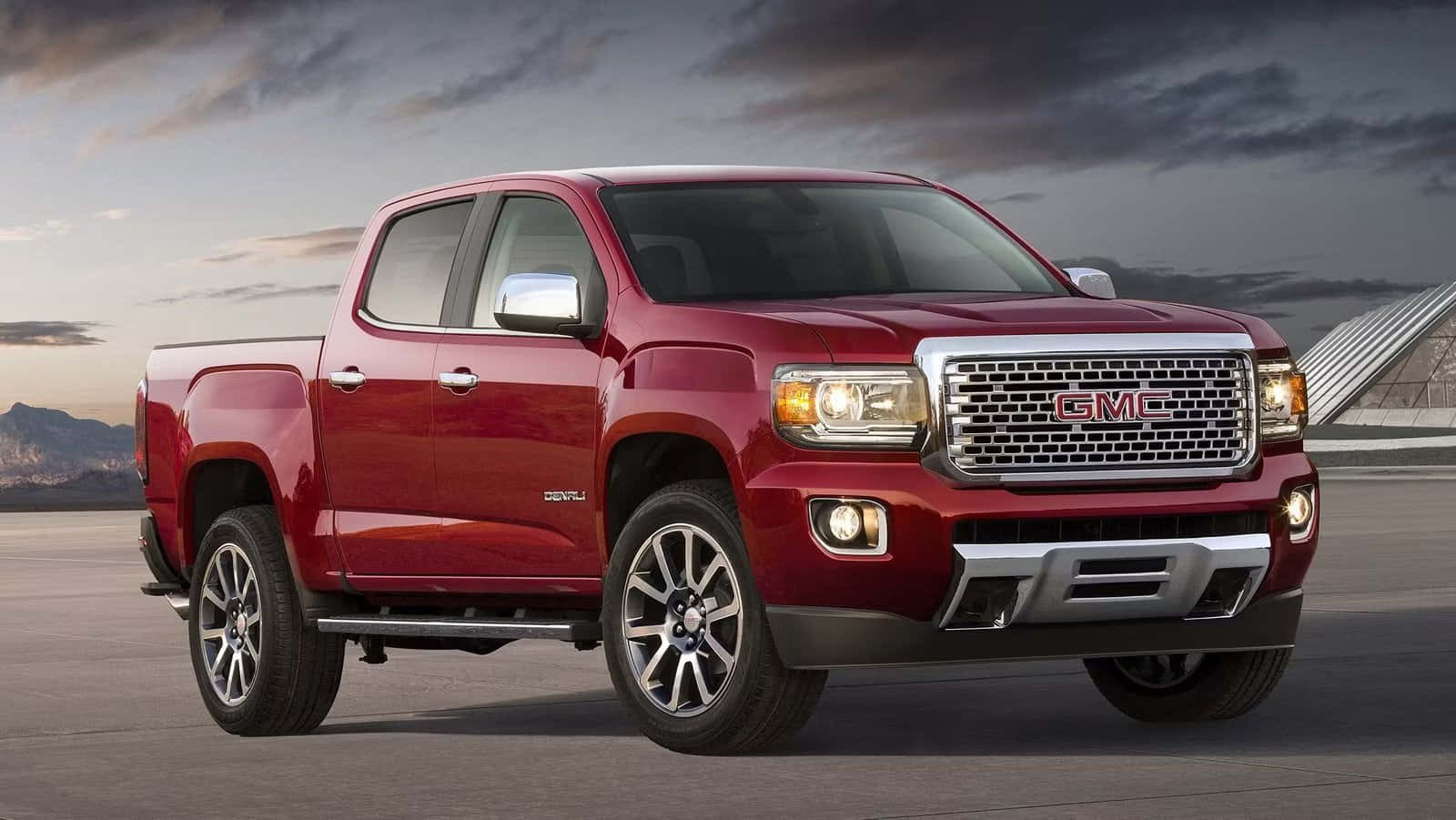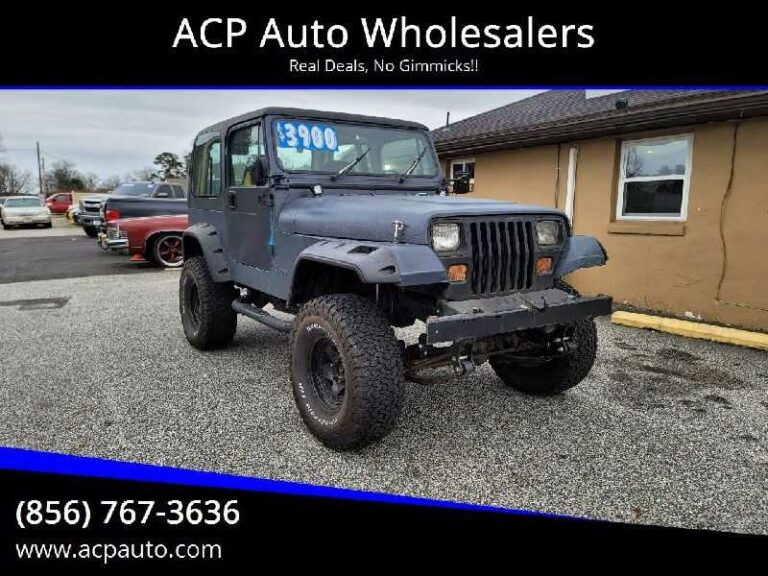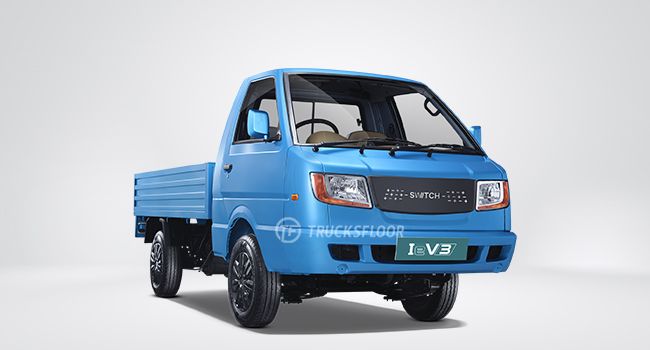GMC Lifted Trucks For Sale: Your Comprehensive Buying Guide
GMC Lifted Trucks For Sale: Your Comprehensive Buying Guide cars.truckstrend.com
The roar of an engine, the imposing stance, the promise of conquering any terrain – for many truck enthusiasts, a lifted GMC truck isn’t just a vehicle; it’s a statement. A lifted GMC truck takes the already capable and rugged foundation of a Sierra, Canyon, or Yukon and elevates it, literally, to new heights. These machines are engineered and customized to offer superior ground clearance, allowing for larger tires, improved off-road capabilities, and an undeniable aesthetic appeal that commands attention on and off the road.
Whether you’re an avid off-roader seeking enhanced performance, a weekend warrior needing more utility, or simply someone who appreciates the aggressive, commanding presence of a customized truck, the market for GMC lifted trucks for sale offers a vast array of options. However, navigating this specialized segment requires a thorough understanding of what goes into a quality lift, what to look for, and how to make an informed purchase. This comprehensive guide will equip you with the knowledge needed to confidently find and acquire your dream GMC lifted truck.
GMC Lifted Trucks For Sale: Your Comprehensive Buying Guide
Why Choose a Lifted GMC Truck?
The allure of a lifted GMC truck extends beyond mere aesthetics. There are several compelling reasons why buyers opt for these formidable vehicles:
- Dominant Aesthetics: Let’s face it, a lifted truck looks impressive. The raised suspension, larger tires, and enhanced ground clearance create an aggressive, powerful, and unique presence that stands out from standard vehicles. It’s a statement of capability and style.
- Enhanced Off-Road Capability: This is arguably the primary functional benefit. A lifted suspension significantly increases ground clearance, allowing the truck to navigate over larger obstacles (rocks, logs, deep ruts) without scraping the undercarriage. It also improves approach, departure, and break-over angles, making challenging terrains more accessible.
- Accommodates Larger Tires: Lifting a truck is often a prerequisite for fitting larger, more aggressive off-road tires. These tires offer superior traction, durability, and a larger contact patch, crucial for performance in mud, sand, snow, or rocky conditions.
- Improved Visibility: Sitting higher in the cab provides a better vantage point, offering an improved view of the road ahead and surrounding traffic, which can contribute to a greater sense of control and safety.
- Increased Utility: For some, the lift allows for easier access to specific types of trailers or equipment, or simply makes loading and unloading certain items more convenient.
- Personalization and Expression: A lifted truck is a canvas for customization. It allows owners to express their personality and create a vehicle that perfectly suits their lifestyle and needs, setting it apart from the factory standard.

Understanding Lift Kits: Types and Considerations
Before diving into the market, it’s crucial to understand the different types of lift kits available and what they entail. The quality and type of lift significantly impact the truck’s performance, ride quality, and longevity.
Types of Lift Kits:

-
Suspension Lift Kits: These are the most comprehensive and popular type of lift, replacing or modifying components of the truck’s suspension system.
- How they work: They involve new or modified coil springs, leaf springs, shocks, control arms, steering components, and sometimes drop brackets for the differential.
- Benefits: Offer significant lift (from 2 inches to 12+ inches), improve articulation, enhance off-road performance, and often maintain or improve ride quality when properly installed with quality components.
- Considerations: More expensive and complex to install, can affect driveline angles (requiring re-gearing or driveline modifications), and may impact warranty.

-
Body Lift Kits: These kits raise the truck’s body off its frame.
- How they work: They use spacers placed between the body and the frame mounting points.
- Benefits: Relatively inexpensive, easier to install than suspension lifts, and purely aesthetic, allowing for larger tires without altering suspension geometry.
- Considerations: Typically offer less lift (1-3 inches), do not improve ground clearance (only the body is raised), can expose the frame rails, and may require modifications to steering, shifter, and bumper mounts.
-
Leveling Kits: These are a minor form of lift, primarily designed to correct the factory "rake" (where the front sits lower than the rear).
- How they work: They typically use spacers or taller springs/shocks on the front suspension.
- Benefits: Inexpensive, easy to install, corrects the truck’s stance, and allows for slightly larger tires.
- Considerations: Only offer a minimal lift (1-2.5 inches) and don’t significantly enhance off-road capability.
Important Considerations for Lift Kits:
- Quality of Components: Not all lift kits are created equal. Research reputable brands known for durability and performance. Cheap kits can lead to premature wear, poor ride quality, and safety issues.
- Professional Installation: A properly installed lift is paramount. Incorrect installation can lead to alignment problems, driveline vibrations, premature wear on components, and even dangerous handling characteristics. Always ask for documentation of professional installation.
- Impact on Ride Quality: While some high-quality suspension lifts can improve ride, many alter it. Be prepared for a potentially stiffer or different feel, especially with larger lifts and aggressive tires.
- Driveline Angles: Larger suspension lifts can alter the angles of the driveshafts, leading to vibrations, U-joint wear, or requiring costly modifications like a slip yoke eliminator or new driveshafts.
- Re-gearing: When installing significantly larger tires (e.g., 35-inch or larger), the truck’s original gear ratio may no longer be optimal, leading to sluggish performance and reduced fuel economy. Re-gearing the differentials can restore power and efficiency.
- Warranty Implications: Be aware that modifying the suspension can void portions of your vehicle’s factory warranty related to affected components.
Where to Find GMC Lifted Trucks For Sale
The search for your ideal lifted GMC truck can take you to several different avenues, each with its own advantages and disadvantages.
-
Dealerships (New & Used):
- Pros: Offer financing options, potential warranties (especially on newer used models), and a more streamlined buying process. Many dealerships now offer pre-lifted "custom" trucks from the factory or through third-party modifiers.
- Cons: Generally higher prices than private sellers. The selection of specific lift configurations might be limited.
-
Private Sellers:
- Pros: Often the best source for negotiating a lower price. You might find unique, highly customized builds. Direct communication with the previous owner can provide valuable insights into the truck’s history and the lift components.
- Cons: No warranty, "as-is" sales. Requires more due diligence on the buyer’s part, including thorough inspections and verifying ownership.
-
Online Marketplaces:
- Popular Platforms: AutoTrader, Cars.com, eBay Motors, Craigslist, Facebook Marketplace, specialized forums (e.g., GMC-specific forums, off-road enthusiast sites).
- Pros: Vast selection, ability to filter by location, price, and features. Easy to compare different listings.
- Cons: Can be overwhelming. Be wary of scams or misrepresented vehicles. Always arrange to see the truck in person.
-
Specialty Lifted Truck Dealers/Custom Shops:
- Pros: These businesses specialize in lifted trucks and often have a curated inventory of professionally built or custom-ordered vehicles. They can offer expertise, support, and sometimes even their own limited warranties on modifications.
- Cons: Prices are typically higher due to the expertise and quality of work involved.
-
Auctions:
- Types: Public auctions, government auctions, insurance salvage auctions.
- Pros: Potential for significant savings.
- Cons: "Buyer beware" environment. Often no opportunity for test drives or thorough inspections. Vehicles may have undisclosed issues. Not recommended for first-time buyers of modified vehicles.
Key Factors to Consider Before Buying
Purchasing a modified vehicle like a lifted truck requires a more critical eye than buying a standard one.
- Budget Beyond the Purchase Price: Factor in not just the sticker price, but also potential costs for insurance (modified vehicles can have higher premiums), increased fuel consumption (due to larger tires and altered aerodynamics), maintenance, and potential future repairs on specialized components.
- Intended Use: Be honest about how you’ll use the truck.
- Daily Driver: Prioritize ride quality, safety, and practicality.
- Off-Roader: Focus on lift type, component strength, tire type, and protective modifications (skid plates, rock sliders).
- Show Truck: Aesthetics and unique customization will be key.
- Quality of Lift and Installation: This is paramount. Ask for receipts and documentation of the lift kit purchase and installation. A reputable shop will provide these. Look for signs of shoddy work: exposed wiring, loose components, improper welding, or uneven stance.
- Tire and Wheel Package:
- Tire Type: All-terrain (AT) for balanced performance, mud-terrain (MT) for aggressive off-road grip, or highway tires for on-road comfort.
- Size: Ensure the tires are appropriate for the lift and clear the fenders and suspension components without rubbing.
- Condition: Check tire tread depth and for uneven wear, which could indicate alignment issues or suspension problems.
- Pre-Purchase Inspection (PPI): This cannot be stressed enough. Hire a trusted, independent mechanic (ideally one familiar with lifted vehicles) to perform a comprehensive inspection. They can identify frame damage, rust, worn suspension components, driveline issues, and proper alignment.
- Legalities and Regulations: Research your local state or provincial laws regarding maximum lift height, tire protrusion, fender flare requirements, and bumper height. Non-compliance can lead to fines or inspection failures.
- Insurance Implications: Inform your insurance provider that you are purchasing a lifted vehicle. Modifications can affect coverage and premiums. Ensure your policy covers the value of the modifications.
The Buying Process: Tips for a Smooth Transaction
Once you’ve identified a potential candidate, follow these steps to ensure a confident purchase:
- Research Thoroughly: Understand the specific GMC model, its common issues, and the reputation of the lift kit brand installed. Compare prices for similar lifted trucks in your area.
- Initial Contact: Ask specific questions about the lift kit (brand, size, when installed), maintenance history, and reason for selling. Request photos of the undercarriage.
- In-Person Inspection: Examine the truck in daylight. Look for rust, frame damage, fluid leaks, and signs of accident repair. Pay close attention to the suspension components: shocks, springs, control arms, and steering linkages.
- Test Drive:
- Evaluate ride quality: Is it excessively bouncy or harsh?
- Listen for unusual noises: Clunks, groans, or vibrations could indicate driveline issues, worn bearings, or alignment problems.
- Check steering: Does it pull to one side? Is it loose or overly stiff?
- Test brakes: Do they feel strong and even?
- Try different speeds and terrains (if safe and appropriate) to assess handling.
- Ask for Records: Request maintenance records, receipts for the lift kit, and any other modifications. This provides insight into the truck’s care and the quality of the parts used.
- Negotiate: Be prepared to negotiate the price, especially if you find any issues during your inspection.
- Final Paperwork: Ensure all titles, bills of sale, and transfer documents are properly completed and signed. Verify VIN numbers match.
Sample Price Table for GMC Lifted Trucks For Sale
It’s crucial to understand that the prices for GMC lifted trucks can vary dramatically based on the model year, mileage, condition, specific GMC trim level (e.g., AT4, Denali), the quality and type of lift kit, the installed tires and wheels, and geographical location. The table below provides estimated ranges for general guidance.
| GMC Model & Series | Year Range | Lift Type (Approx. Inches) | Estimated Price Range (USD) | Notes & Key Influencers |
|---|---|---|---|---|
| GMC Sierra 1500 | 2010-2015 | Mild (2-4") | $15,000 – $28,000 | Older generation, condition and mileage heavily influence price. |
| Moderate (4-6") | $18,000 – $35,000 | Quality of lift components and tire/wheel package are key. | ||
| 2016-2020 | Mild (2-4") | $28,000 – $45,000 | Popular generation, strong resale value. | |
| Moderate (4-6") | $32,000 – $55,000 | Higher prices for reputable lift brands and professional installation. | ||
| 2021-Present | Mild (2-4") | $45,000 – $70,000+ | Newer models, lower mileage. Denali/AT4 trims significantly increase price. | |
| Moderate (4-6") | $50,000 – $80,000+ | Custom builds from reputable shops will be at the higher end. | ||
| GMC Sierra 2500HD/3500HD | 2010-2015 | Moderate (4-6") | $25,000 – $45,000 | Diesel engines often command higher prices. |
| Extreme (6"+) | $30,000 – $55,000 | Complex lifts on HD trucks can be very expensive. | ||
| 2016-2020 | Moderate (4-6") | $40,000 – $65,000 | Strong demand for heavy-duty models. | |
| Extreme (6"+) | $45,000 – $75,000+ | Professional modifications and premium components. | ||
| 2021-Present | Moderate (4-6") | $60,000 – $90,000+ | Highly capable, often premium trims. | |
| GMC Canyon | 2015-2020 | Mild (2-4") | $20,000 – $35,000 | Mid-size appeal, often a more budget-friendly option for a lifted truck. |
| Moderate (4-6") | $25,000 – $40,000 | Less common for extreme lifts, but available. | ||
| 2021-Present | Mild (2-4") | $35,000 – $50,000+ | Newer generation Canyons are very popular for light off-roading. |
Disclaimer: These are highly variable estimates. Factors such as regional market demand, the truck’s overall condition, specific engine (e.g., Duramax diesel vs. gasoline), interior features, and the brand/quality of the installed lift kit, tires, and wheels will significantly impact the final price. Always conduct thorough research for specific models in your local market.
Frequently Asked Questions (FAQ) about GMC Lifted Trucks
Q: Does lifting a truck void the warranty?
A: Generally, yes, for the components directly affected by the lift (suspension, drivetrain, steering). However, the Magnuson-Moss Warranty Act prevents a manufacturer from voiding an entire warranty due to an aftermarket part unless they can prove the part caused the failure. It’s best to check with the dealership or manufacturer.
Q: How does lifting affect fuel economy?
A: Lifting a truck and adding larger, heavier, more aggressive tires almost always decreases fuel economy. The increased weight, rolling resistance of the tires, and altered aerodynamics contribute to lower MPG.
Q: Is a lifted truck harder to drive?
A: It can be. The higher center of gravity can lead to more body roll in turns. Larger tires can make steering feel heavier, and braking distances might increase. Some drivers also find entry/exit more challenging. It requires an adjustment period.
Q: Do I need to re-gear my truck after lifting?
A: If you install significantly larger tires (typically 35 inches or more), re-gearing your differentials is highly recommended. This restores the engine’s power band, improves acceleration, and can prevent premature wear on the transmission, as it won’t be constantly searching for the right gear.
Q: What are common problems with lifted trucks?
A: Common issues can include premature wear on ball joints, tie rods, CV axles, and other suspension/driveline components due to altered angles; driveline vibrations; alignment difficulties; and increased wear on brakes. Poorly installed lifts can also lead to handling and safety issues.
Q: Can I lift my truck myself?
A: While possible for experienced mechanics with proper tools and knowledge, professional installation is strongly recommended for suspension lifts. Incorrect installation can compromise safety, ride quality, and component longevity. Body lifts are simpler but still require attention to detail.
Q: Are lifted trucks safe?
A: A professionally installed, high-quality lift kit on a well-maintained truck can be safe. However, a poorly installed lift or one with cheap components can compromise handling, braking, and overall safety. It’s crucial to understand the risks and ensure all modifications are done correctly.
Conclusion
The market for GMC lifted trucks for sale offers an exciting array of powerful and eye-catching vehicles, perfectly blending rugged capability with unmistakable style. Whether you’re drawn to the enhanced off-road prowess, the ability to fit massive tires, or simply the commanding presence these trucks exude, making an informed purchase is key to a satisfying ownership experience.
By understanding the different types of lift kits, knowing where to search, and diligently inspecting potential candidates with a critical eye (and ideally, a professional mechanic), you can confidently navigate the buying process. Remember to factor in not just the initial cost, but also the long-term implications of owning a modified vehicle, including insurance, maintenance, and potential future upgrades. With thorough research and careful consideration, your dream GMC lifted truck can become a reality, ready to tackle any adventure you throw its way.




